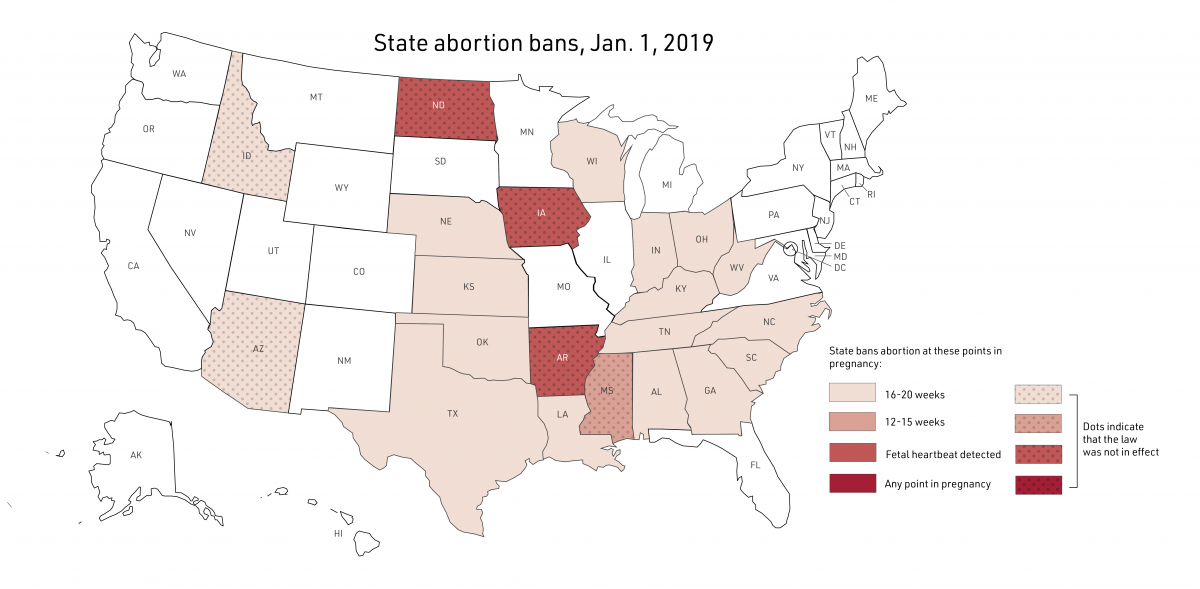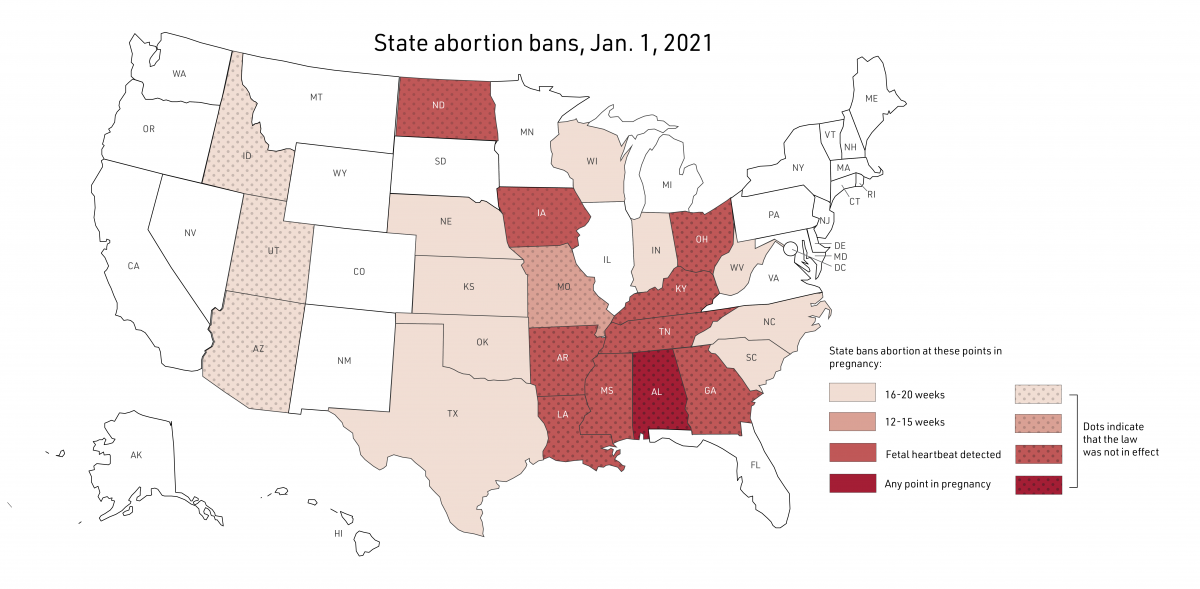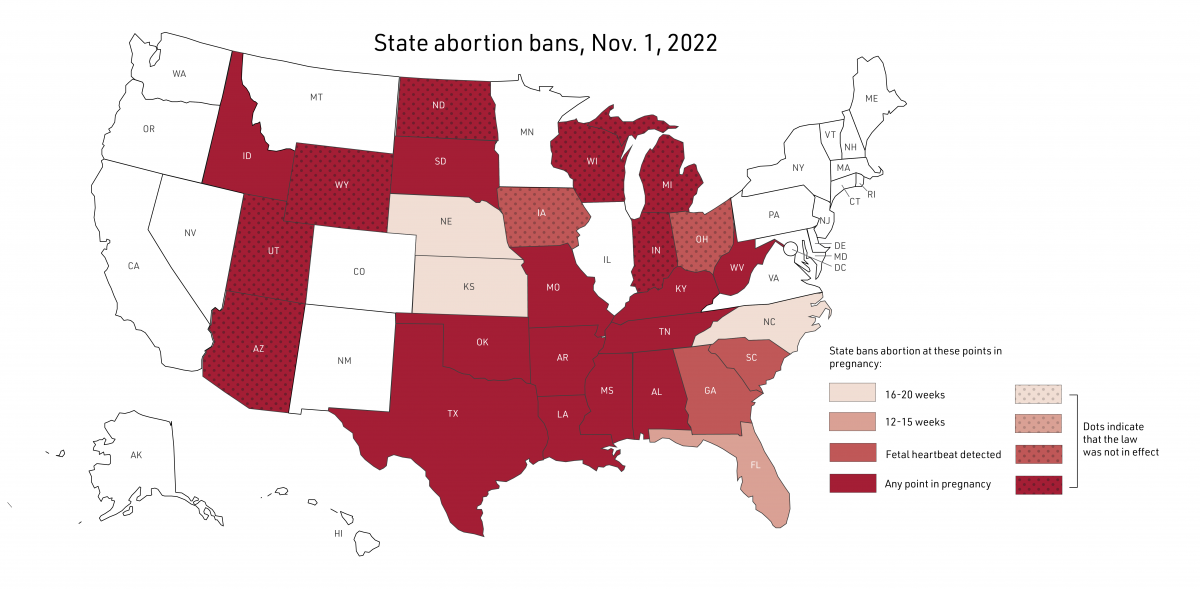The legal limitations restricting abortion in the United States continue to erode access to reproductive health care at an alarming pace while other states work to protect and expand access, according to updated data released by the Center for Public Health Law Research at Temple University’s Beasley School of Law.
The data on LawAtlas.org now capture comprehensive details of abortion laws through November 1, 2022.
“In this post-Dobbs landscape, huge swathes of the country have been left without access to abortion. Bans on abortion harm pregnant people and their families, leading to worse outcomes and stigmatizing care. States must work urgently to protect and expand access by leveraging supportive policy solutions,” said Adrienne Ghorashi, Esq., a lead law and policy analyst at the Center for Public Health Law Research and lead researcher on this project.
“Even under Roe, restrictions on abortion hindered access especially for young people, people of color, and people with low incomes. The stark changes since our first tracking effort in 2018 highlight the urgency in better understanding the impact of these laws on health, well-being, and equity.”
Abortion bans have been a particularly active area of law since 2019 despite Roe’s constitutional protections. Pre-viability limits, the subject of the Supreme Court case in Dobbs v. Jackson Women's Health Organization, have become more restrictive over time by increasingly shrinking the window of time during pregnancy when someone may seek an abortion.
As of November 1, 2022, there are 19 states that ban abortion at any point in pregnancy, compared to just three states on June 1, 2022. Seven of those state laws were not in effect as of November 1, 2022.
With the overturning of Roe v. Wade in that case, pre-Roe bans and trigger laws came into effect, banning abortion in some states nearly overnight and opening the floodgates for new abortion bans to be implemented.
Abortion bans became increasingly restrictive leading up to and following the Dobbs decision in June 2022
Beyond abortion bans, states continued to enact other types of laws limiting access to abortion.
States have increasingly targeted medication abortion by prohibiting the mailing of abortion-inducing drugs, mandating report filing, mandating counseling on so-called “medication abortion reversal,” pre-abortion testing requirements, and prohibiting the use of telehealth. In contrast, the FDA has recently lifted certain REMS restrictions on mifepristone, potentially paving the way for more accessible medication abortion.
Additionally, the data now include information on fetal burial requirements, which have been enacted in 10 states to mandate requirements related to the burial or cremation of aborted fetal tissue. These laws impose on patients and providers and implicate concepts of “fetal personhood.”
In response to Dobbs, states are working to increase access to abortion care through constitutional amendments protecting the right to abortion, protecting access to facilities, protecting patient and provider confidentiality, and expanding who is eligible to provide abortions. Many of these protections have been in place prior to Dobbs. As of November 1, 2022:
- The right to abortion is explicitly protected by state statute in 16 states and the District of Columbia.
- Maine added an 8-foot buffer zone around abortion facilities, joining 16 other states and the District of Columbia with facility-related protections.
- New York amended its address confidentiality program to include privacy protections for reproductive health care services personnel and patients, joining California and New Jersey, which already had similar programs in place.
- Connecticut, Delaware, Maryland, New Jersey, and New York expanded the number of qualified providers who may provide medication and aspiration abortions.
The updated data released today capture state statutes, regulations, and court rulings in 16 different legal areas related to abortion, from December 1, 2018, through November 1, 2022. The data are maintained in partnership with Regulatory Assistance for Abortion Providers (RAAP), a division of Resources for Abortion Delivery (RAD).
The Center for Public Health Law Research at Temple University’s Beasley School of Law supports the widespread adoption of scientific tools and methods for mapping and evaluating the impact of law on health. Learn more at http://phlr.org.



